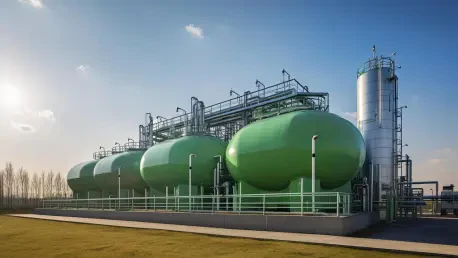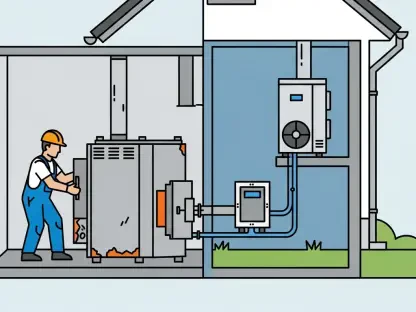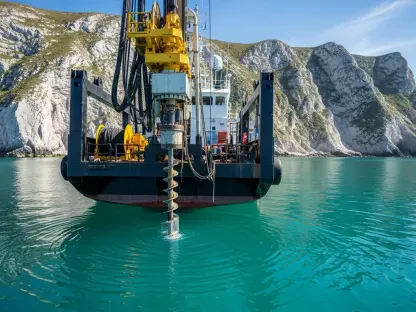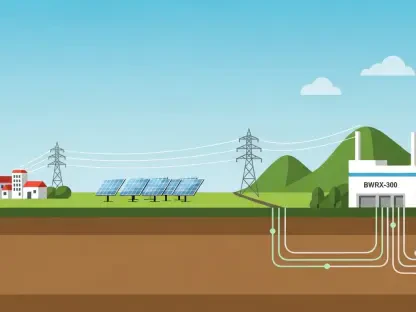In this engaging conversation, we sit down with Christopher Hailstone, a seasoned expert in renewable energy and energy management, to discuss the upcoming green hydrogen plant near Kochi airport. With a focus on grid reliability and security, Christopher provides deeper insights into this groundbreaking project in India, poised to enhance the region’s clean energy landscape.
Can you provide more details about the green hydrogen plant being commissioned near Kochi airport?
The green hydrogen plant near Kochi airport is a pioneering project for South India. It’s a collaborative effort between Bharat Petroleum Corporation Limited (BPCL) and Cochin International Airport Ltd (CIAL). BPCL has taken charge of building and operating the plant, which costs around ₹25 crore and features a capacity of 1,000 kilowatts. CIAL contributes by offering land, water, and renewable energy sources. This plant is expected to produce about 200 kg of green hydrogen daily, utilizing four electrolysers capable of generating 200 normal cubic meters of hydrogen per hour.
How does the technology behind the plant work?
The plant employs electrolysis technology to produce green hydrogen, where water is split into oxygen and hydrogen using electrical energy derived from renewable sources. This process is not only efficient but sustainable, making it an ideal approach for clean energy production. Four electrolysers are pivotal in this process, each contributing to the plant’s total hydrogen output.
What are the initial plans for utilizing the green hydrogen produced at this plant?
Initially, the green hydrogen produced at the plant will be used to fuel vehicles within the airport. This step towards emission-free airport mobility is significant, setting a precedent for ecological transport solutions. Moreover, there are plans to expand the application to include hydrogen-powered vehicles throughout the region, including possibly introducing such vehicles in and around the airport.
How does the project fit into the larger framework of clean energy initiatives in the region?
This project is an integral part of the National Green Hydrogen Mission and aligns with the broader goals of Kerala’s Hydrogen Valley Program. By establishing these refueling stations, it supports pilot transportation projects between pivotal cities like Kochi and Thiruvananthapuram, promoting the commercial viability of hydrogen as a clean energy alternative.
What are the potential commercial applications of this green hydrogen project?
Commercial applications are on the horizon, with plans to introduce hydrogen fuel to the broader public as more hydrogen-powered vehicles come into the market. BPCL is actively expanding its hydrogen refueling network, with another station planned for Thiruvananthapuram. The timeline for introducing commercially available hydrogen fuel is dependent on infrastructure development and market readiness.
What challenges have been faced in setting up the plant, and how have they been addressed?
Setting up the plant did come with its set of challenges, including a delay from the initially planned launch. However, the collaboration between BPCL and CIAL has been critical in overcoming these hurdles, ensuring the plant’s readiness. The delay provided additional time to optimize the setup and ensure all systems are fully functional, paving the way for a successful launch.
Can you share more about the hydrogen-powered bus project?
The hydrogen-powered bus is a crucial part of demonstrating this technology’s practical applications. KPIT Technologies, based in Pune, is developing the hydrogen fuel cells used in these buses. If initial trials with the first bus prove successful, there are plans to bring in additional buses to further test and prove the technology’s viability in public transportation.
How do you envision the future of hydrogen energy in Kerala and broader India?
Hydrogen energy has the potential to significantly reduce transportation emissions across the region, marking a transformative shift toward sustainable energy. Projects like the one near Kochi airport set a foundation for this transition. Looking ahead, more projects are likely to emerge, incorporating hydrogen technology across various sectors, from transportation to industrial use, creating a comprehensive clean energy ecosystem.









